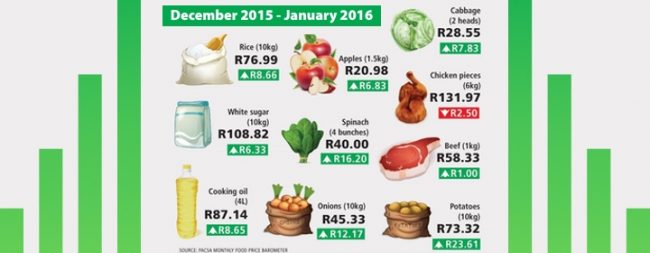Certain provinces have been struggling to keep up with the skyrocketing cost of food. Current data points to an agriculture industry that is struggling, mainly due to the diminished buying power of the rand and a prolonged drought.
November 2015 saw the worst drought in South Africa in 23 years. During this time Stats SA released figures showing three consecutive quarters of steep decline in agricultural activity, forcing South Africa to import maize to make up for the shortfall. With the rand also being in decline the price of imports has risen, drastically inflating the cost of food.
According to Stats SA, grain-based products account for 4.8% of total spending for the average South African household. In rural areas, this figure rises to 10.8% of total spending. Households that depend on grain-based products as a staple dietary supplement, as well as households that are already struggling to pay for food, are likely to be the most affected. This is just in relation to grain-based products, the cost of all food is on the rise and it’s predicted to keep going up.
The Pietermaritzburg Agency for Community Social Action (Pacsa) tracks the inflation on 36 basic food items purchased by lower-income households. The cost of a food basket in January had increased by 9% compared to three months prior.
Between the months of December 2015 and February 2016, general food prices have increased at eight times the rate than they have over the past year. This is, in part, due to retailers increasing prices to protect their profit margins in lieu of the weakened rand.
Make some extra room in your budget to compensate for the increased food prices (and stock up on soup for winter, no pun intended). With the rand being what it is we may all have to prepare to forego some luxuries.
In need of financial advice? Let’s get in touch!

